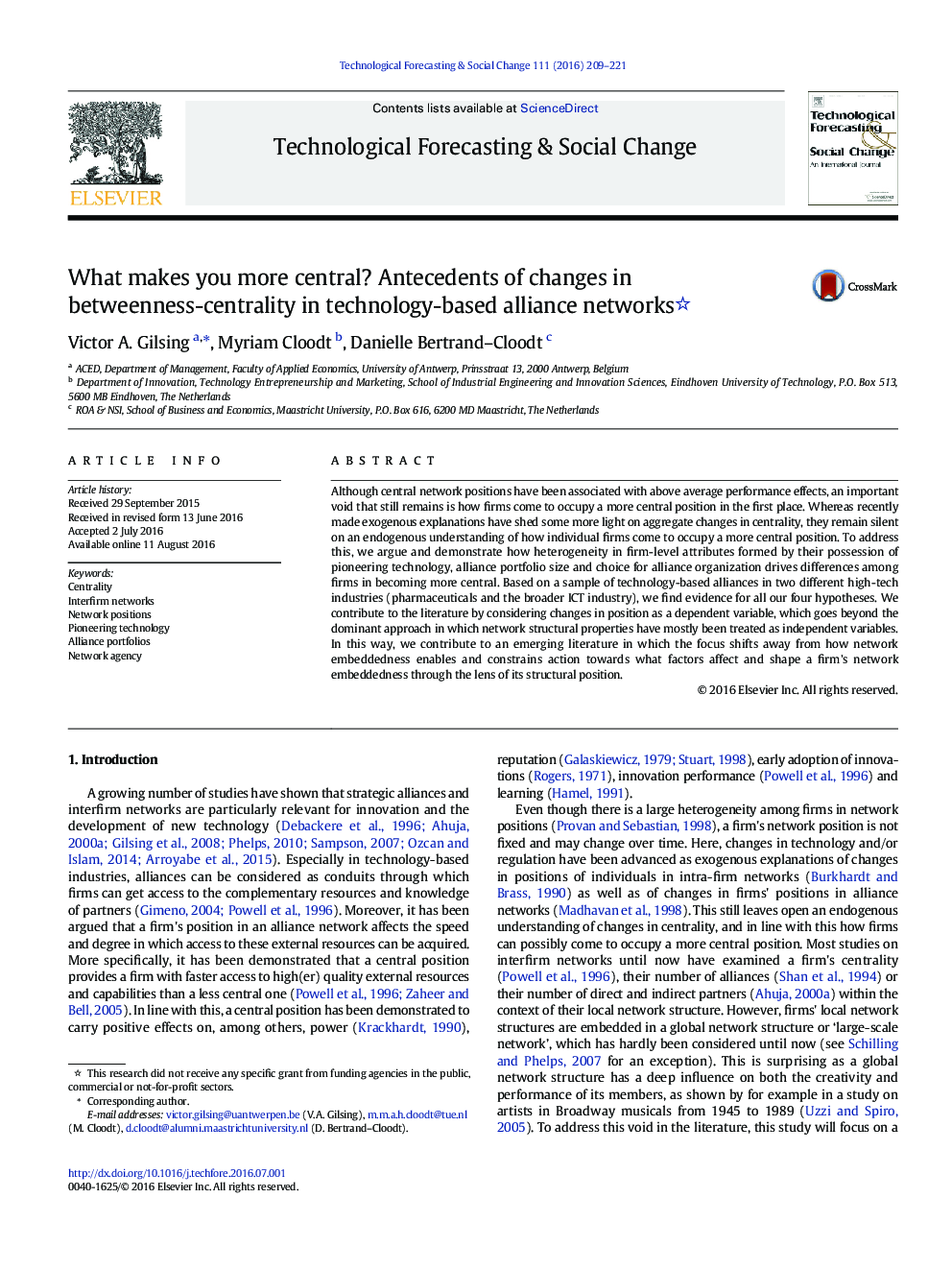| Article ID | Journal | Published Year | Pages | File Type |
|---|---|---|---|---|
| 5037162 | Technological Forecasting and Social Change | 2016 | 13 Pages |
â¢Endogenous antecedents of how firms move into more central network positionsâ¢Key antecedents are portfolio size and possession of pioneering technology.â¢More room for firms to improve position than hitherto assumed, but no full controlâ¢Complements the dominant emphasis on exogenous antecedents to network positions
Although central network positions have been associated with above average performance effects, an important void that still remains is how firms come to occupy a more central position in the first place. Whereas recently made exogenous explanations have shed some more light on aggregate changes in centrality, they remain silent on an endogenous understanding of how individual firms come to occupy a more central position. To address this, we argue and demonstrate how heterogeneity in firm-level attributes formed by their possession of pioneering technology, alliance portfolio size and choice for alliance organization drives differences among firms in becoming more central. Based on a sample of technology-based alliances in two different high-tech industries (pharmaceuticals and the broader ICT industry), we find evidence for all our four hypotheses. We contribute to the literature by considering changes in position as a dependent variable, which goes beyond the dominant approach in which network structural properties have mostly been treated as independent variables. In this way, we contribute to an emerging literature in which the focus shifts away from how network embeddedness enables and constrains action towards what factors affect and shape a firm's network embeddedness through the lens of its structural position.
